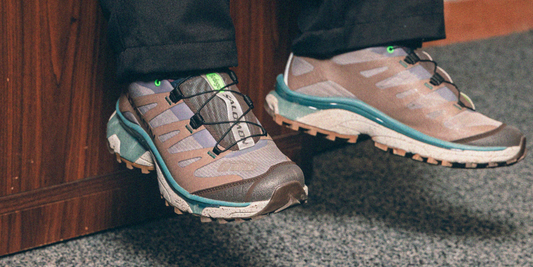
Modern streetwear is essentially built on the premise of creating fashion through reappropriation. The major sportswear brands of the world, for instance, didn’t spend countless hours on the research and development of running shoes because of the way they paired with jeans. Even in an atmosphere rich with reinterpretation and reuse, there are few style institutions as far removed from their original, functional purpose as workwear is.All those construction elements that get fashionable hearts fluttering, leather patches, denim, canvas, steel toes, and the rest originally filled practical needs from long term durability to outright protection against jobsite mangling.The story of workwear’s adoption by various 20th century youth subcultures is a familiar one, and, since we’ve covered it in the past, we don’t plan on retelling it here, but the manual labor aesthetic did get us thinking about heavy industry’s influence on culture. With that in mind, let’s take a look at how the deterioration of traditional industry in a major manufacturing city inadvertently leapt modern music forward.Sheffield, United Kingdom was a city with a longstanding industrial tradition. With a history of steel production dating back centuries, the mass production of steel on an industrial level was pioneered in this Yorkshire city. Yet, the realities of late 20th century economic forces left the city in a period of protracted decline. Generally speaking, the conditions of enforced idleness, limited to nonexistent economic prospects, cause massive breakdowns in traditional social structures. (It’s no coincidence that the outdoor scenes in A Clockwork Orange were filmed against the brutalist architecture of 1970s England.) For the artistically inclined, the combination of a blank present and uncertain future can offer nearly unlimited creative freedom.The first wave of punk in the UK may have been, in terms of sound and set-up, may have been conventional rock n’ roll, but the raw energy and anything goes spirit resonated well beyond the initial point of impact. In Sheffield, the new rallying cry became no standard instrumentation. The constant hum and dehumanized element of industrial machinery informed groups like Cabaret Voltaire, Clock DVA, and Yorkshire neighbors Throbbing Gristle pioneered industrial music with a combination of confrontational, experimental art sensibility, anti-social imagery, synthesizers, tape sampling and mechanized rhythms.At the other end of Sheffield’s electronic spectrum, things were pushed in an aspirational pop direction. The Human League applied sci-fi inspired escapism and futuristic synth sounds to a more accessible pop song structure, resulting in two influential cult albums. A split in the Human League took Sheffield’s synth-pop to the next level. The likes of the Human League’s second incarnation, Heaven 17, and ABC threw an increasingly catchy and sophisticated sensibility and a semi-satirical upscale aesthetic, resulting in the wave of electronic laden pop music that dominated the early 1980s charts.It’s kind of an unlikely story, but so is welding overalls showing up in a fashion photoshoot.


















